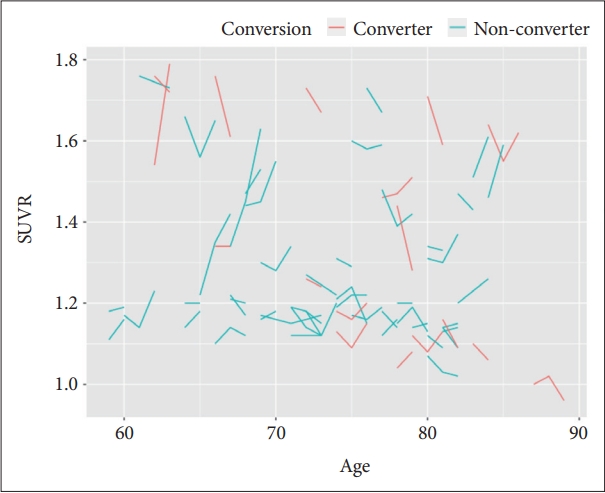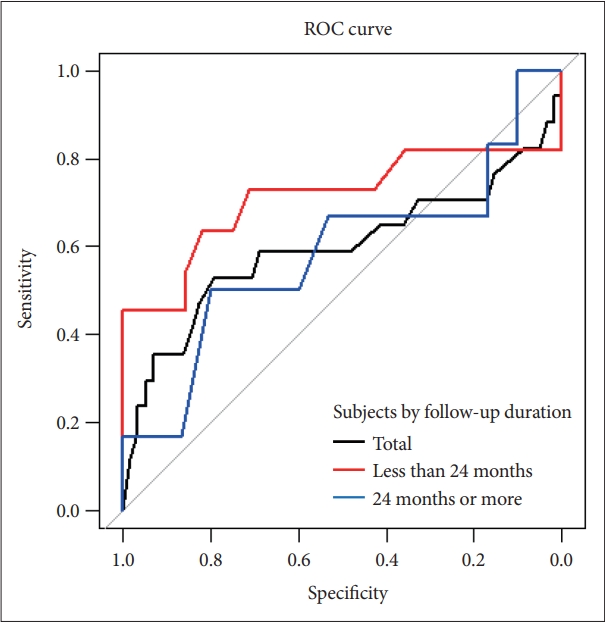 |
 |
- Search
| Psychiatry Investig > Volume 19(5); 2022 > Article |
|
Abstract
Objective
Methods
Results
Notes
Availability of Data and Material
The datasets generated or analyzed during the study are available from the corresponding author on reasonable request.
Conflicts of Interest
IL Han Choo, a contributing editor of the Psychiatry Investigation, was not involved in the editorial evaluation or decision to publish this article. All remaining authors have declared no conflicts of interest.
Author Contributions
Conceptualization: IL Han Choo. Data curation: all authors. Formal analysis: IL Han Choo. Funding acquisition: all authors. Project administration: IL Han Choo, Hoowon Kim. Visualization: Yu Yong Choi. WritingŌĆöoriginal draft: IL Han Choo. WritingŌĆöreview & editing: IL Han Choo.
Funding Statement
This study was funded by the Bio & Medical Technology Development Program of the National Research Foundation (NRF) funded by the Korean government (MSIT) (No. 2016M3A9E9941914).
Figure┬Ā1.

Figure┬Ā2.

Figure┬Ā3.

Table┬Ā1.
| MCI non-converters (N=58) | MCI converters (N=17) | p value | |
|---|---|---|---|
| Age (yr) | 73.2┬▒6.7 | 75.0┬▒7.5 | 0.351 |
| Sex, female (%) | 56.9 | 29.4 | 0.046* |
| Education (yr) | 9.3┬▒4.4 | 9.4┬▒5.1 | 0.941 |
| Mean cortical amyloid burden | 1.25┬▒0.16 | 1.38┬▒0.27 | 0.079 |
| CDR | 0.5 | 0.5 | |
| SMC | 5.1┬▒3.1 | 5.7┬▒3.4 | 0.510 |
| GDS | 10.1┬▒7.7 | 9.7┬▒7.3 | 0.850 |
| APOE ╬Ą4 allele positive (%) | 37.5 | 29.3 | 0.531 |
| MMSE | -1.20┬▒1.48 | -1.55┬▒1.12 | 0.376 |
| Attention | |||
| ŌĆāDSF | -0.50┬▒0.78 | -0.47┬▒0.91 | 0.903 |
| ŌĆāDSB | -0.48┬▒0.82 | -0.59┬▒0.95 | 0.640 |
| Language | |||
| ŌĆāBNT | -0.36┬▒0.98 | -1.19┬▒1.00 | 0.003* |
| Visuospatial functions | |||
| ŌĆāRCFT copy | -0.26┬▒1.25 | -1.28┬▒2.40 | 0.101 |
| Memory | |||
| ŌĆāSVLTirl | -0.79┬▒0.96 | -1.18┬▒0.82 | 0.134 |
| ŌĆāSVLTdrl | -1.13┬▒1.08 | -1.78┬▒0.76 | 0.023* |
| ŌĆāSVLTrcg | -0.90┬▒1.25 | -1.17┬▒0.82 | 0.291 |
| ŌĆāRCFTirl | -0.77┬▒0.84 | -1.06┬▒1.12 | 0.251 |
| ŌĆāRCFTdrl | -0.77┬▒0.82 | -1.46┬▒1.07 | 0.006* |
| ŌĆāRCFTrcg | -0.59┬▒1.07 | -0.94┬▒1.40 | 0.265 |
| Executive functions | |||
| ŌĆāFluency_A | -0.68┬▒0.96 | -1.07┬▒0.68 | 0.122 |
| ŌĆāFluency_S | -0.83┬▒0.77 | -1.19┬▒0.39 | 0.215 |
| ŌĆāStroop Word | -0.41┬▒1.14 | -0.47┬▒0.95 | 0.863 |
| ŌĆāStroop Color Word | -0.75┬▒1.17 | -1.74┬▒1.67 | 0.007* |
| ŌĆāTMT_A | -0.71┬▒1.48 | -1.36┬▒2.12 | 0.154 |
| ŌĆāTMT_B | -0.53┬▒1.13 | -0.54┬▒1.14 | 0.967 |
Values are presented as mean┬▒SD. Neuropsychological data presented as group mean z-scores based on age-, education-, and sex specific normative information (SD).
CDR, Clinical Dementia Rating; SMC, Subjective Memory Complaints; GDS, Geriatric Depression Scale; APOE, apolipoprotein; MMSE, Mini-Mental Status Examination; DSF, Digit Span Forward; DSB, Digit Span Backward; BNT, Boston Naming Test (15 item); RCFT copy, Rey Complex Figure Test copy; SVLTirl, Seoul Verbal Learning Test, immediate recall score; SVLTdrl,SVLT 20-minute delayed recall; SVLTrcg, SVLT yes-no recognition; RCFTirl, RCFT immediate recall; RCFTdrl, RCFT 20-minute delayed recall; RCFTrcg, RCFT yes-no recognition score; fluency_A, fluency score for animal; fluency_S, fluency score for supermarket list; Stroop Color Word, Stroop score for color naming in color-word in incongruent condition; TMT, Trail Making Test; MCI, mild cognitive impairment; SD, standard deviation
Table┬Ā2.
| Baseline diagnosis | Follow-up diagnosis | Number | Percentage |
|---|---|---|---|
| aMCI | aMCI | 28 | 37.3 |
| aMCI | naMCI | 11 | 14.7 |
| aMCI | CN | 5 | 6.7 |
| aMCI | AD | 12 | 16.0 |
| naMCI | aMCI | 4 | 5.3 |
| naMCI | naMCI | 9 | 12.0 |
| naMCI | CN | 1 | 1.3 |
| naMCI | AD | 5 | 6.7 |
Table┬Ā3.
Table┬Ā4.
REFERENCES







